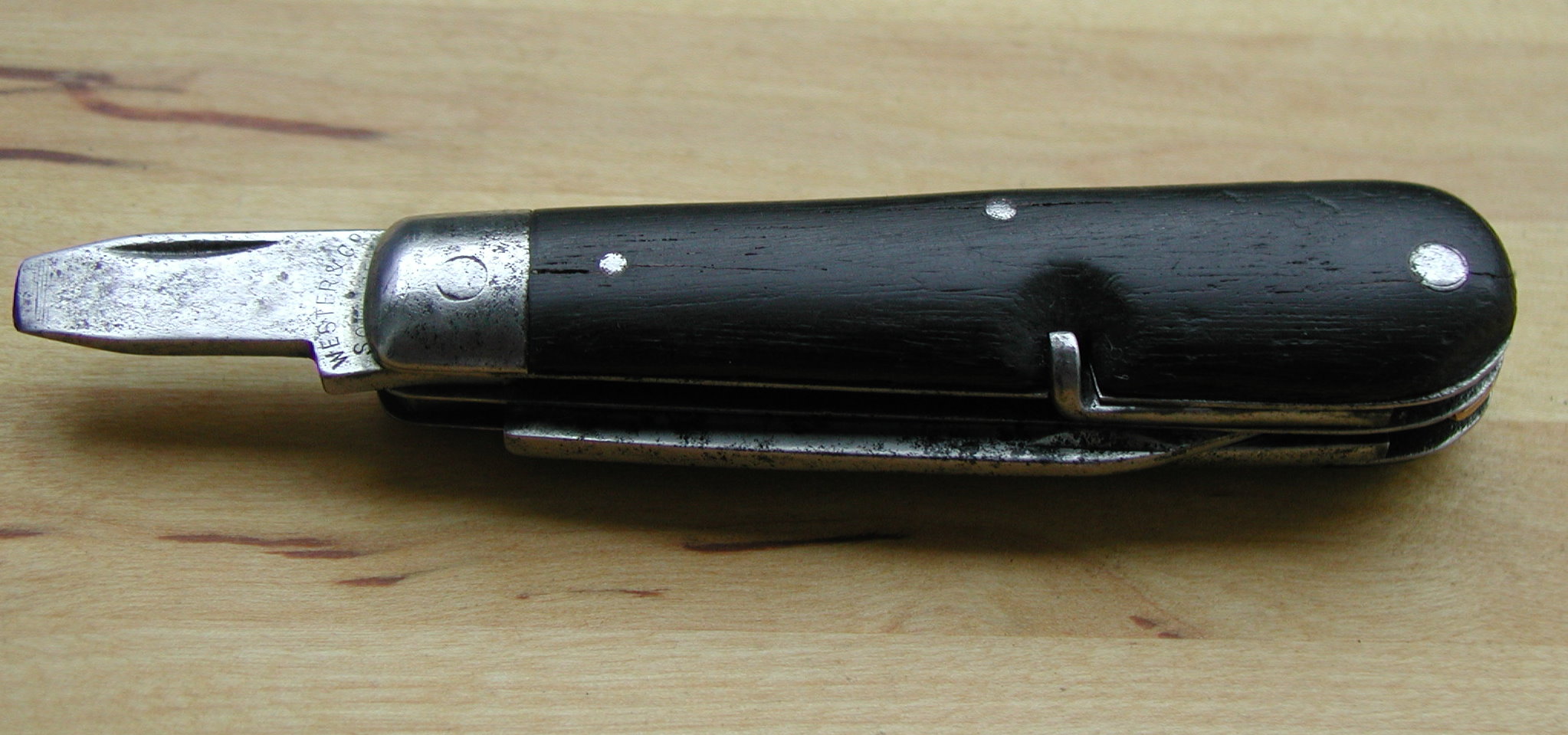Nowadays the Leatherman or Victorinox are the first thaughts when we think of the multi-tool or swiss knife.
 But history of hand tools that combines several individual functions in a single unit are much older. The oldest known multi-tool was made circa 1900 years ago. An intricately designed Roman implement, which dates back to 200AD, it is made from silver but has an iron blade. It features a spoon, fork as well as a retractable spike, spatula and small tooth-pick. The 3in x 6in (8cm x 15cm) knife was excavated from the Mediterranean area more than 20 years ago.
But history of hand tools that combines several individual functions in a single unit are much older. The oldest known multi-tool was made circa 1900 years ago. An intricately designed Roman implement, which dates back to 200AD, it is made from silver but has an iron blade. It features a spoon, fork as well as a retractable spike, spatula and small tooth-pick. The 3in x 6in (8cm x 15cm) knife was excavated from the Mediterranean area more than 20 years ago.
The first ever example of miniaturization was found in Alps, a neolithic (3000 BC!) pocket knife with hole for carrying it on a string. It probably belonged to a traveler similar to Otzi, the Iceman.

 It wasn’t until the end of middle ages when the idea of multi-tool came back to life. In 15th century German craftsmen made combination tools of dividers, grips, hammer, and chisel. The multi-tool (left) was made in Nuremberg, contains fourteen anchored small tools, on the one hand, three rasps, a pointed Winder, a jig saw, a knife and a detour, on the other a key, four files, a square spade and a gimlet.
It wasn’t until the end of middle ages when the idea of multi-tool came back to life. In 15th century German craftsmen made combination tools of dividers, grips, hammer, and chisel. The multi-tool (left) was made in Nuremberg, contains fourteen anchored small tools, on the one hand, three rasps, a pointed Winder, a jig saw, a knife and a detour, on the other a key, four files, a square spade and a gimlet.
 This kind of knifes were very expensive and produced in limited amounts. But during the late 1880s, the Swiss Army decided to purchase a new folding pocket knife for their soldiers. This knife was to be suitable for use by the army in opening canned food and disassembling the Swiss service rifle, the Schmidt–Rubin, which required a screwdriver for assembly. In January 1891, the knife received the official designation Modell 1890. The knife had a blade, reamer, can-opener, screwdriver, and grips made out of dark oak wood that was later partly replaced with ebony wood. At that time no Swiss company had the necessary production capacity, so the initial order for 15,000 knives was placed with the German knife manufacturer Wester & Co. from Solingen, Germany. These knives were delivered in October 1891. In 1891, Karl Elsener, then owner of a company that made surgical equipment, set out to manufacture the knives in Switzerland itself. That was the start of famous swiss knife. Now, you can find it in almost every house.
This kind of knifes were very expensive and produced in limited amounts. But during the late 1880s, the Swiss Army decided to purchase a new folding pocket knife for their soldiers. This knife was to be suitable for use by the army in opening canned food and disassembling the Swiss service rifle, the Schmidt–Rubin, which required a screwdriver for assembly. In January 1891, the knife received the official designation Modell 1890. The knife had a blade, reamer, can-opener, screwdriver, and grips made out of dark oak wood that was later partly replaced with ebony wood. At that time no Swiss company had the necessary production capacity, so the initial order for 15,000 knives was placed with the German knife manufacturer Wester & Co. from Solingen, Germany. These knives were delivered in October 1891. In 1891, Karl Elsener, then owner of a company that made surgical equipment, set out to manufacture the knives in Switzerland itself. That was the start of famous swiss knife. Now, you can find it in almost every house.
The first ever example of miniaturization was found in Alps, a neolithic (3000 BC!) pocket knife with hole for carrying it on a string. It probably belonged to a traveler similar to Otzi, the Iceman.

0 comments:
Post a Comment